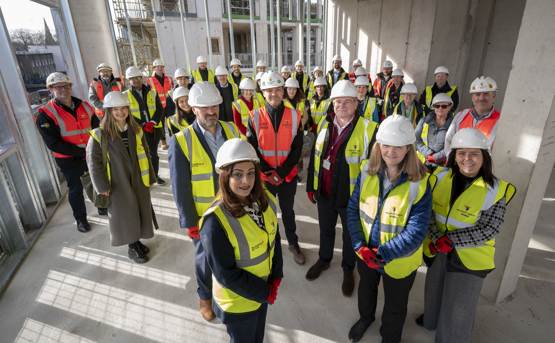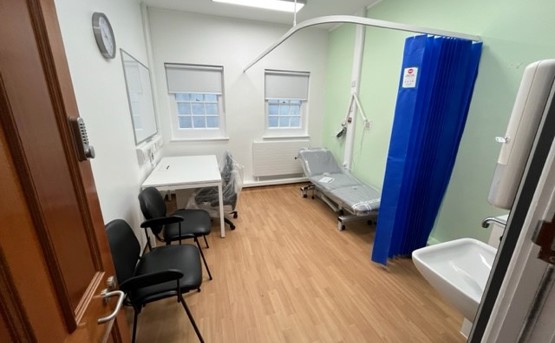
Published date: 27 February 2020
Transforming the NHS estate
Before committing to expensive capital healthcare projects, we should ensure that we are making the best use of our existing buildings. Hear from John Westwood, Director of Asset Management at NHS Property Services.
Author
Last month I took part in the annual Westminster Health Forum policy conference, discussing the future of the NHS estate with my NHS and property partners. Given the Government’s spending commitment to the Health Infrastructure Plan (HIP), many conversations centred around new funding and how best to use to deliver true transformation.
New funding for healthcare facilities is absolutely crucial and very much welcome boost for the NHS. However, what I have also heard from the industry, patients and politicians is the importance of making the best and efficient use of what we already have through building a solid foundation of data and reinforcing collaboration to unlock further ‘utilisation’ of the estate.
Cautious optimism – but funding new construction projects is not enough
The reaction to the HIP funding was summarised well by the National Audit Office – “a case for cautious optimism”. I.e. We must remain realistic about what it can achieve. For example, Sir Robert Naylor highlighted that the £6.3 billion in backlog maintenance across the estate is no quick fix, and even with enough funding would take years to solve. The same applies for construction projects - hospitals can take a decade to build in particularly complex and densely populated areas, which requires multi-phased builds.
Funding for construction alone is not enough, and Naylor raised the need for funding to build estate management capacity and capability within the NHS. Few NHS CEOs currently have the estates focus, expertise or experience needed to fully unlock the potential of this new funding. At NHS Property Services (NHSPS), the property owner and advisor to the NHS with a portfolio covering more than 11% of the total NHS estate, we regularly see a gap between funding granted and being able to use it, as a lot of the NHS estate faces restrictions such as listed buildings and near-greenbelt locations, and property expertise is necessary to close this gap.
The primary care estate could be better utilised
There is then the issue of much of this funding being allocated to acute care, with the primary care estate still lacking the focus and funding it needs to support community-based care outlined in the Long Term Plan. Lack of funding for new build projects, however, should not be too limiting a factor in transforming the primary care estate, and stakeholders agree that under-utilisation was the most pressing issue to address.
You often find a ‘swiss cheese’ effect in NHS buildings. This is when a property which might look fully occupied in terms of agreed leases but has space that could be used more effectively to maximise services offered to patients.
Before we commit to expensive capital projects, we should ensure that we make the best use of our existing buildings - using space in smarter ways to maximise capacity where it’s needed. This means repurposing and generating capital from space with low demand, and trying to achieve transformation without having to seek further investment.
Using data to save time and money
To do this, we need to work across the system to better understand our estate, building a foundation of data on which to make informed decisions.
At NHSPS, we’re going straight to the source by mobilising our frontline workforce to identify and flag empty or underused spaces in the buildings they manage, which we can then – working with our occupiers – repurpose to deliver better value for the NHS.
Harnessing technology is vital too. Our NHS Open Space programme provides a platform to flexibly book sessional space and uses sensors to track and report on utilisation. This offers a clearer picture to occupiers and Clinical Commissioning Groups, often showing a gap between what is booked and what is used. This can enable more informed estate management and encourage better behaviour around using space, and crucially, save the NHS time and money and allow services to be delivered in the right places for patients.
A better utilised estate means a better NHS
It’s important to remember that optimising our NHS space is about more than just driving utilisation and efficiencies. At NHSPS we’re committed to enhancing patient and staff experience through their built environment, creating real value for our occupiers by – for example – creating agile and collaborative working spaces, or wellbeing and community spaces to support social prescribing initiatives.
Ultimately, we need to take a decision on what will enable the delivery of the best possible patient care. We will only be able do this through working closely with our NHS and public sector partners to find innovative ways to use space for the benefit of our patients.





